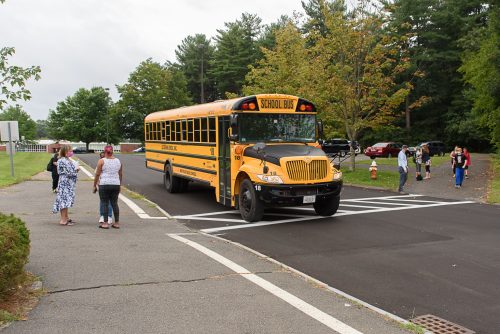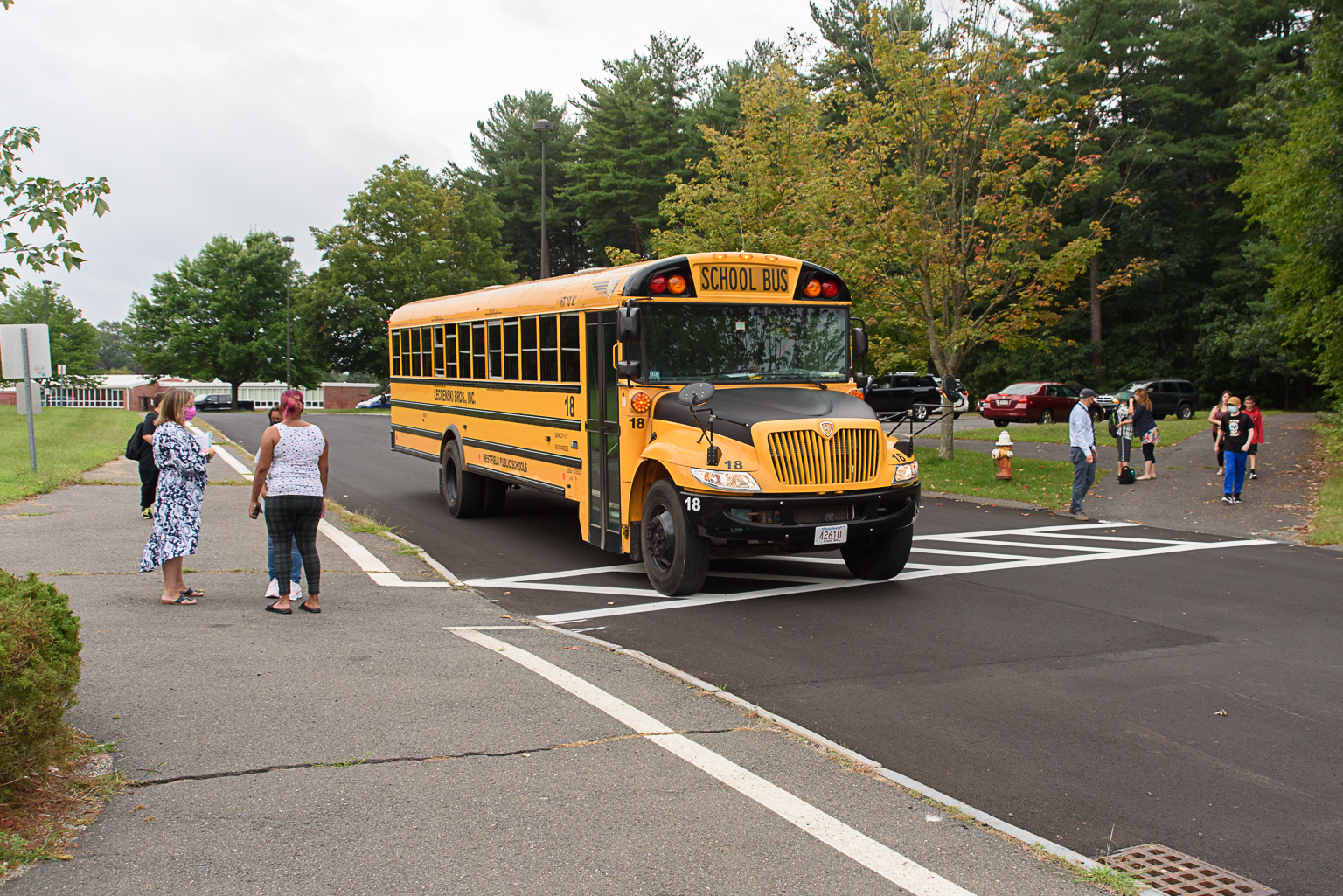
A school bus arrives at the Westfield Intermediate School for the first day of class. (MARC ST. ONGE/THE WESTFIELD NEWS)
WESTFIELD — This month’s survey on how to spend $10.78 million in federal pandemic-related grants “pretty much confirmed what we were thinking about how to use the funding,” School Superintendent Stefan Czaporowski said this week.
“But we will dig deeper into the survey results next week to make adjustments as needed,” he added.
Westfield schools have been promised $10,784,275 from the third round of Elementary and Secondary School Emergency Relief grants, part of the federal American Rescue Plan Act. Although the funds have been reserved for Westfield, the district still must apply for the ESSER III grant. The application is due Friday, Oct. 1.
Czaporowski said the district is sill working on its spending plan for the ESSER III funds.
“So far, we have extensive HVAC work planned at the Middle and Intermediate schools. We are also going to continue to operate the Westfield Virtual School and maintain the additional school adjustment counselors that were hired this year to help meet the social and emotional needs of our students,” he said.
The stated purpose of the ESSER III relief funds is to allow districts and schools to safely reopen and sustain safe operations over the next three years. Eligible categories for spending include the academic, social, emotional and mental health needs of all students, and particularly those disproportionately impacted by the COVID-19 pandemic.
One requirement of the funding is that each district set aside 20 percent of the allocation to address lost instructional time. Other allowable uses of the funds include school facility repairs and improvements (specifically related to reducing virus transmission and exposure), supplies to sanitize and clean buildings, and educational technology.
The top three spending priorities among the survey responses received by Sept. 22 were improvements to facilities to improve safety (73.8 percent), student social, emotional and mental well-being (73 percent), and additional staff to counter learning loss (65.4 percent); followed by continued emphasis on technology equipment (31.6 percent), additional instruction time for students (26 percent) and additional activities to support special populations (25.7 percent).
With a minimum of 20 percent of the funding required to address lost instructional time, the top three ways respondents thought best to address these losses were focused intervention programs for specifically identified populations (68.9 percent), extended after-school tutoring programs (57.6 percent), and acquiring evidence-based instructional materials (55.3 percent); followed by additional professional development for faculty and staff (42.3 percent), extended summer school program (32.5 percent) and Saturday tutoring sessions (18.7 percent).
The final question of the survey asked in addition to addressing academic learning loss, which three areas best address students’ needs in returning in-person instruction. 67.8 percent of respondents chose social emotional well-being counseling and social work; 58.7 percent said safety considerations including upgrades to facilities, and 48.6 percent said technology needs, including device upgrades and software.
Czaporowski sent the survey to all families, staff, the Westfield Education to Business Alliance (WE2BA) and the community at large. Of the 1,300 responses, 66.9 percent were from parents, guardians and caregivers; 16.3 percent from teachers; 9.5 percent from other school staff; 3 percent from community members; 2.1 percent from students, and 1.7 percent from school district staff.
Most survey responses were in English. The schools had also translated the questions into Arabic, Nepali, Russian and Spanish. Nine surveys were returned in Spanish, one in Arabic, and 10 in Russian.
“We are making it a priority to translate as much as possible moving forward,” said Czaporowski, adding that the number of responses received, about 1,300, is a little above the average for the School Department.
Though the schools must submit all of their ESSER III grant applications by Oct. 1, the funds can be spent any time during a three-year period, ending Sept. 30, 2024.







